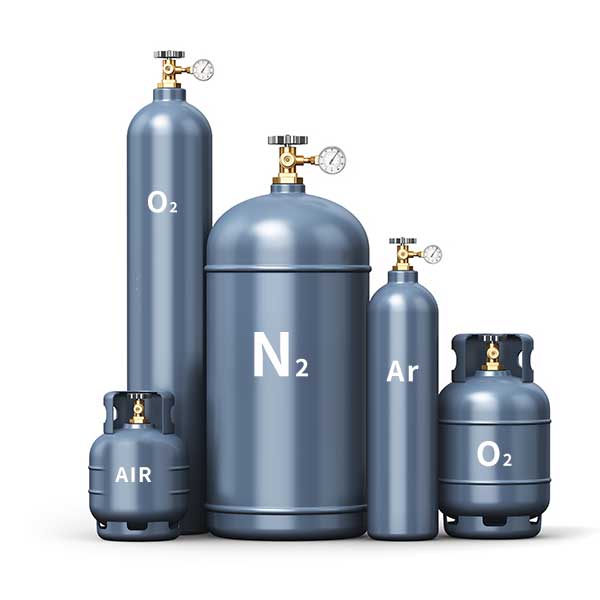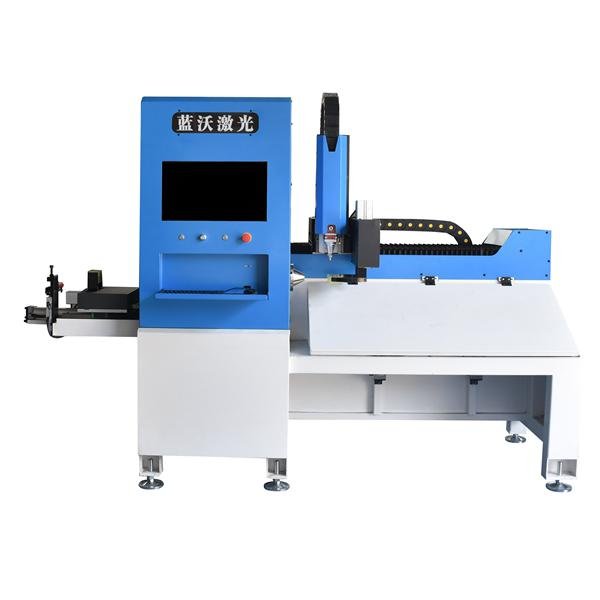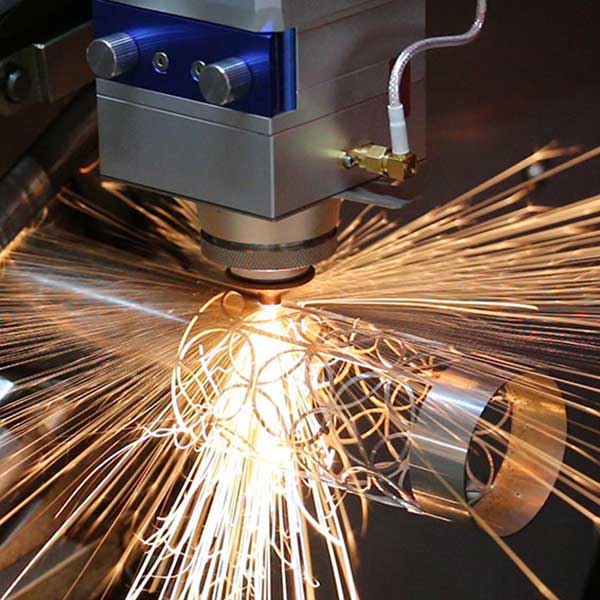In the metal processing industry, the metal tube laser cutting machine, as an important machine in the processing industry, is highly sought after and welcomed by users.Auxiliary gas is an essential component of metal tube laser cutting machines, as it helps to enhance the cutting quality and efficiency of the process.

Table of Contents
ToggleRole of auxiliary gas
1. Protection of the lens: The auxiliary gas, usually nitrogen or oxygen, is used to create a protective atmosphere around the laser cutting lens, which prevents dust, debris, and other contaminants from accumulating on the lens surface. This helps to maintain the clarity of the lens and ensures that the laser beam remains focused, resulting in a cleaner, smoother cut.
2. Removal of molten material: The auxiliary gas is used to blow away the molten metal that is generated during the cutting process. The high-pressure gas stream removes the molten material from the kerf and prevents it from adhering to the cut edge or interfering with the laser beam.
3. Cooling of the material: The auxiliary gas helps to cool the material during the cutting process, which helps to minimize the heat-affected zone and reduce the risk of warping or distortion. The cooling effect of the gas also helps to maintain the structural integrity of the material and improves the accuracy of the cut.
4. Reduction of oxidation: The auxiliary gas can be used to reduce the oxidation of the metal during the cutting process. For example, the use of nitrogen gas can help to prevent the oxidation of stainless steel and other metals, resulting in a cleaner and smoother cut.
Overall, the use of auxiliary gas is crucial for achieving high-quality, precise cuts in metal tube laser-cutting machines. The selection of the appropriate gas and the optimization of gas flow parameters are critical factors that can significantly impact the cutting quality and efficiency of the process.
How to choose auxiliary gas ?
The auxiliary gas of the metal tube laser cutting machine usually chooses to use four kinds of gases: air, oxygen, nitrogen, and argon.
1、Air
Air is a mixed gas containing nitrogen, oxygen, and other gases. The collection method is relatively simple. It is compressed into a gas storage tank by an air compressor and can be extracted after filtering, cooling, and drying, which requires less cost. It is mainly used in the processing of thin metal plates. It relies on laser energy to melt the metal workpiece, blows away the molten material with high pressure, and uses air-assisted cutting of the workpiece to produce an oxidation reaction and form metal oxide. It is mainly suitable for cutting metal materials such as carbon steel, aluminum, aluminum alloy, brass, and electroplated steel plate.
2、 Oxygen
Oxygen cutting can play a combustion-supporting effect. During the cutting process, the oxygen reacts with heat, which can greatly improve the cutting efficiency. The oxide film produced will increase the beam spectral absorption index of the reflective material so that the laser energy can be used more effectively, and the laser cutting machine can be speeded up. The cutting speed is mainly suitable for cutting thick plates, such as carbon steel, stainless steel, alloy metals, etc.
3、Nitrogen
Nitrogen is chemically inactive, and it is not easy to oxidize with the processed workpiece. It can effectively prevent the oxidation-free cutting of the oxide film, and the cut surface will become white. The use of nitrogen for cutting requires higher purity. Nitrogen can be used for auxiliary cutting if the quality of the cutting surface is high. It is mainly suitable for cutting metal materials such as stainless steel, electroplated steel plate, brass, and aluminum.
4、Argon
Argon gas is also an inert gas, chemically inactive, and it is not easy to oxidize with the processed workpiece. Compared with other auxiliary gases, the use cost is higher. It is mainly suitable for cutting titanium alloy materials.
Auxiliary gas of advantage and weakness
| Air type | Advantage | Weakness |
| O2 | 1. An oxide film can be formed to improve the laser absorption capacity of high-reflective materials2. Cutting some oxidizable materials can improve the quality of the cut section (such as making the carbon steel section black and shiny) | Combustion-supporting gas, easy to burn and return to slag |
| N2 | 1. Suppress the combustion gas, not easy to burn and not easy to return to slag2. After cutting, there will be corrosion resistance and other characteristics3. The maximum air pressure is relatively large, which can increase the cutting speed to a certain extent | expensive! ! !High purity requirements, large amount of cutting process |
| Air | 1. Low cost2. Micro oxide film will be formed on the cut surface | Can also support combustion, easy to burn and return to slag, less than oxygen(It is not recommended to use when the product cutting requirements are relatively high) |
Auxiliary gas suitable for cutting materials
Since the auxiliary gas has its own characteristics, the materials suitable for cutting are not the same.
| Air type | Suitable Materials |
| O2 | Carbon steel, high tension plate, tool plate, stainless steel, electroplated steel plate, copper, copper alloy, etc. |
| N2 | Stainless steel, electroplated steel plate, brass, copper, aluminum, aluminum alloy, etc. |
| AIR | Carbon steel, aluminum, stainless copper, brass, electroplated steel plate, non-metal, etc. |
Purity standard of auxiliary gas
The laser processing process of different materials needs to use matching auxiliary gas. The impurities in the auxiliary gas will damage the lens and cause fluctuations in the cutting power. At the same time, it will also lead to inconsistencies in the front and back of the cutting.
| Air type | Purity(%) | Water vapor | Hydrocarbon |
| O2 | 99.95 | <5 ppm | <1 ppm |
| N2 | 99.995 | <5 ppm | <1 ppm |
Auxiliary gas pressure standard
During the cutting process, the auxiliary gas can prevent slag return and protect the lens inside the laser head.
In other words, under the same conditions of processing power, material and sheet thickness, the greater the air pressure, the more smoke and dust can be blown off per unit speed.
Therefore, the higher the pressure value used, the faster the laser cutting speed can be. This is why we usually use nitrogen when cutting thin plates on the fly cutting.
| Air type | O2 | AIR | N2 |
| Maximum air pressure | <1 Mpa | 1.8 Mpa | 2.0 Mpa |
The general law of the cutting speed of thin plates can be obtained:
Oxygen < Air < Nitrogen
In the above content, many gases can be used universally, and the important thing is to consider the cutting cost and the requirements for the product.
For example, when cutting stainless steel materials, when the quality or surface quality of the product is not very demanding, such as painting and other processing procedures in the later stage of cutting the product, air can be used as the cutting gas, which can reduce a lot of costs. When the cut product is the final product, and there is no follow-up process, it is necessary to use a protective gas, such as a craft product. Therefore, in the process of cutting materials, the auxiliary gas must be selected according to the characteristics of the product.


